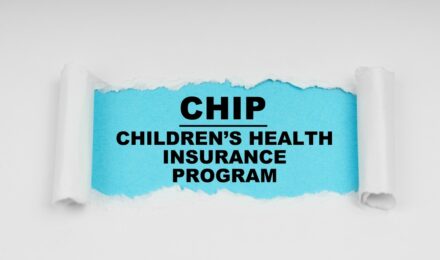Contents
As summer winds down and fall begins, families across the United States are turning their attention back to financial planning, specifically 2025 Tax Credits. September may feel early to think about taxes, but it is actually the ideal time to prepare. Many of the most valuable credits for low- and moderate-income households require documentation, timely updates, or proactive steps before December 31. Waiting until tax season can mean missed opportunities, delayed refunds, or lost eligibility.
From the Earned Income Tax Credit (EITC) to the Child Tax Credit (CTC) and newer programs like energy efficiency credits, the U.S. tax code offers significant relief. These credits can reduce tax liability or increase refunds, often by thousands of dollars. Yet year after year, millions of families leave money on the table simply because they are unaware of what is available or fail to prepare in time. As the 2025 tax year approaches its final quarter, now is the moment to take action.
Why Early Preparation Matters
2025 tax credits are designed to offset the cost of raising children, working at modest wages, or making investments in health and sustainability. However, eligibility often hinges on factors like income level, dependent status, or documented expenses. Families who wait until tax season to gather records may find themselves missing the paperwork needed to qualify.
For example, childcare expenses must be carefully tracked throughout the year to claim the Child and Dependent Care Tax Credit. Energy efficiency improvements, such as new insulation, windows, or solar panels, require receipts and certification documents to qualify for residential energy credits. Even the EITC, which is based on earned income, can be jeopardized if workers fail to file accurate year-end income statements. Planning in September gives families time to gather documents, update personal information with the IRS, and seek assistance if needed.
Key 2025 Tax Credits
Several major credits remain especially valuable for households as the year closes:
- Earned Income Tax Credit (EITC): Available to low- and moderate-income workers, the EITC can provide refunds ranging from a few hundred dollars to more than $7,000, depending on household size. To qualify, filers must have earned income, meet income thresholds, and file a tax return even if no tax is owed.
- Child Tax Credit (CTC): For 2025, the CTC provides up to $2,000 per qualifying child under 17. Families with higher incomes may see the credit reduced, while those with lower incomes can receive refundable amounts that increase overall refunds.
- Child and Dependent Care Tax Credit (CDCTC): Parents who pay for daycare, after-school care, or summer camps for children under 13 may qualify for this credit, which reimburses a percentage of eligible expenses. Although the enhanced pandemic-era version expired, the standard credit remains valuable.
- Education Credits: The American Opportunity Tax Credit (AOTC) and Lifetime Learning Credit (LLC) help offset tuition and related education costs. Parents and students should ensure they retain 1098-T forms and receipts for qualified expenses.
- Energy Efficiency and Clean Vehicle Credits: Thanks to the Inflation Reduction Act, households making home improvements or purchasing qualifying clean vehicles can claim credits worth hundreds or even thousands of dollars. Receipts and certification are required to ensure eligibility.
Common Mistakes That Cost Families Money
One of the most common mistakes is failing to file altogether. According to the IRS, millions of eligible families miss out on the EITC every year simply because they do not submit a tax return. Others lose benefits by misreporting income or failing to include qualifying dependents.
Another pitfall is neglecting to update personal information. A change in marital status, the birth of a child, or a dependent aging out of eligibility can dramatically alter credit amounts. Families that wait until filing season may miss opportunities to adjust withholding or claim additional benefits.
Finally, many households overlook the need to keep receipts. For education, childcare, or energy-related credits, proof of expenses is essential. Without documentation, credits may be denied or reduced during IRS review.
How Families Can Prepare This Fall
The most effective strategy is to treat September as the beginning of tax readiness. Families should review income statements to date, ensure dependents are correctly listed on Social Security and IRS records, and confirm eligibility for credits based on 2025 thresholds. They should also begin organizing receipts for childcare, education, or home improvements in a secure folder.
Families with fluctuating incomes should consider adjusting withholding or making estimated payments to avoid surprises at filing time. Consulting with a tax preparer or certified volunteer at a Volunteer Income Tax Assistance (VITA) site can provide free, expert guidance. Importantly, low-income families should know that many credits are refundable, meaning they may receive money back even if they owe no tax.
The Role of State-Level Credits
While federal programs receive the most attention, many states now offer their own tax credits. More than half the states provide state versions of the EITC, often refundable, which add to the federal benefit. Some states also offer their own Child Tax Credits or education credits. In 2025, several states are experimenting with credits tied to housing costs or family caregiving. Families should visit their state’s Department of Revenue website in the fall to confirm what additional savings are available.
Where to Find Help
Reliable information is key to maximizing credits. The IRS website remains the primary source for federal program details, offering calculators, eligibility checkers, and forms. Local VITA sites provide free in-person tax assistance for households earning $64,000 or less. Community nonprofits often host tax-preparation workshops in the fall, helping families prepare before the filing rush. Finally, state revenue agencies maintain dedicated portals with information about local credits and deadlines. By exploring these resources in September, families can avoid confusion and enter tax season with confidence.
Conclusion
Tax credits represent one of the most powerful tools available to reduce financial pressure on families. Yet their value depends on preparation. By starting in the fall, households can gather documentation, confirm eligibility, and take steps to maximize refunds when filing season begins. Whether through federal credits like the EITC and CTC, state-level programs, or newer incentives for education and energy efficiency, proactive planning ensures that families capture every dollar they deserve.
The autumn months are often associated with back-to-school routines and preparing for the holidays. This year, families should also see September as the launch point for financial readiness. By taking action now, the 2025 tax season can become an opportunity not just for compliance, but for relief and empowerment.
References
1. Earned Income Tax Credit (EITC). (Internal Revenue Service)
2. Child Tax Credit (CTC). (Internal Revenue Service)
3. State Tax Credits for Families. (Tax Policy Center)
Contents
As summer winds down and fall begins, families across the United States are turning their attention back to financial planning, specifically 2025 Tax Credits. September may feel early to think about taxes, but it is actually the ideal time to prepare. Many of the most valuable credits for low- and moderate-income households require documentation, timely updates, or proactive steps before December 31. Waiting until tax season can mean missed opportunities, delayed refunds, or lost eligibility.
From the Earned Income Tax Credit (EITC) to the Child Tax Credit (CTC) and newer programs like energy efficiency credits, the U.S. tax code offers significant relief. These credits can reduce tax liability or increase refunds, often by thousands of dollars. Yet year after year, millions of families leave money on the table simply because they are unaware of what is available or fail to prepare in time. As the 2025 tax year approaches its final quarter, now is the moment to take action.
Why Early Preparation Matters
2025 tax credits are designed to offset the cost of raising children, working at modest wages, or making investments in health and sustainability. However, eligibility often hinges on factors like income level, dependent status, or documented expenses. Families who wait until tax season to gather records may find themselves missing the paperwork needed to qualify.
For example, childcare expenses must be carefully tracked throughout the year to claim the Child and Dependent Care Tax Credit. Energy efficiency improvements, such as new insulation, windows, or solar panels, require receipts and certification documents to qualify for residential energy credits. Even the EITC, which is based on earned income, can be jeopardized if workers fail to file accurate year-end income statements. Planning in September gives families time to gather documents, update personal information with the IRS, and seek assistance if needed.
Key 2025 Tax Credits
Several major credits remain especially valuable for households as the year closes:
- Earned Income Tax Credit (EITC): Available to low- and moderate-income workers, the EITC can provide refunds ranging from a few hundred dollars to more than $7,000, depending on household size. To qualify, filers must have earned income, meet income thresholds, and file a tax return even if no tax is owed.
- Child Tax Credit (CTC): For 2025, the CTC provides up to $2,000 per qualifying child under 17. Families with higher incomes may see the credit reduced, while those with lower incomes can receive refundable amounts that increase overall refunds.
- Child and Dependent Care Tax Credit (CDCTC): Parents who pay for daycare, after-school care, or summer camps for children under 13 may qualify for this credit, which reimburses a percentage of eligible expenses. Although the enhanced pandemic-era version expired, the standard credit remains valuable.
- Education Credits: The American Opportunity Tax Credit (AOTC) and Lifetime Learning Credit (LLC) help offset tuition and related education costs. Parents and students should ensure they retain 1098-T forms and receipts for qualified expenses.
- Energy Efficiency and Clean Vehicle Credits: Thanks to the Inflation Reduction Act, households making home improvements or purchasing qualifying clean vehicles can claim credits worth hundreds or even thousands of dollars. Receipts and certification are required to ensure eligibility.
Common Mistakes That Cost Families Money
One of the most common mistakes is failing to file altogether. According to the IRS, millions of eligible families miss out on the EITC every year simply because they do not submit a tax return. Others lose benefits by misreporting income or failing to include qualifying dependents.
Another pitfall is neglecting to update personal information. A change in marital status, the birth of a child, or a dependent aging out of eligibility can dramatically alter credit amounts. Families that wait until filing season may miss opportunities to adjust withholding or claim additional benefits.
Finally, many households overlook the need to keep receipts. For education, childcare, or energy-related credits, proof of expenses is essential. Without documentation, credits may be denied or reduced during IRS review.
How Families Can Prepare This Fall
The most effective strategy is to treat September as the beginning of tax readiness. Families should review income statements to date, ensure dependents are correctly listed on Social Security and IRS records, and confirm eligibility for credits based on 2025 thresholds. They should also begin organizing receipts for childcare, education, or home improvements in a secure folder.
Families with fluctuating incomes should consider adjusting withholding or making estimated payments to avoid surprises at filing time. Consulting with a tax preparer or certified volunteer at a Volunteer Income Tax Assistance (VITA) site can provide free, expert guidance. Importantly, low-income families should know that many credits are refundable, meaning they may receive money back even if they owe no tax.
The Role of State-Level Credits
While federal programs receive the most attention, many states now offer their own tax credits. More than half the states provide state versions of the EITC, often refundable, which add to the federal benefit. Some states also offer their own Child Tax Credits or education credits. In 2025, several states are experimenting with credits tied to housing costs or family caregiving. Families should visit their state’s Department of Revenue website in the fall to confirm what additional savings are available.
Where to Find Help
Reliable information is key to maximizing credits. The IRS website remains the primary source for federal program details, offering calculators, eligibility checkers, and forms. Local VITA sites provide free in-person tax assistance for households earning $64,000 or less. Community nonprofits often host tax-preparation workshops in the fall, helping families prepare before the filing rush. Finally, state revenue agencies maintain dedicated portals with information about local credits and deadlines. By exploring these resources in September, families can avoid confusion and enter tax season with confidence.
Conclusion
Tax credits represent one of the most powerful tools available to reduce financial pressure on families. Yet their value depends on preparation. By starting in the fall, households can gather documentation, confirm eligibility, and take steps to maximize refunds when filing season begins. Whether through federal credits like the EITC and CTC, state-level programs, or newer incentives for education and energy efficiency, proactive planning ensures that families capture every dollar they deserve.
The autumn months are often associated with back-to-school routines and preparing for the holidays. This year, families should also see September as the launch point for financial readiness. By taking action now, the 2025 tax season can become an opportunity not just for compliance, but for relief and empowerment.
References
1. Earned Income Tax Credit (EITC). (Internal Revenue Service)
2. Child Tax Credit (CTC). (Internal Revenue Service)
3. State Tax Credits for Families. (Tax Policy Center)






